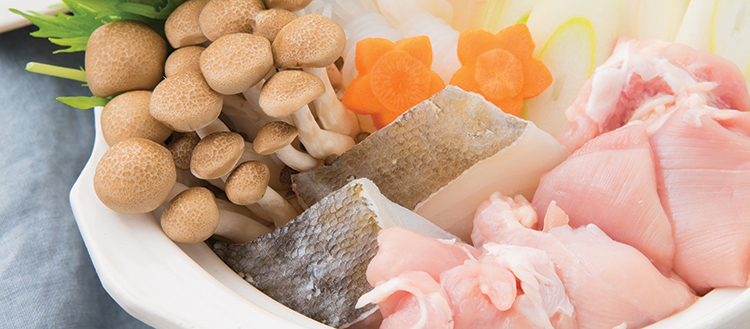This holiday season, ditch the pre-made treats
and make something from the heart
Last winter, a friend gave me a jar of tomato jam. It was delicious, but the fact that it was an unexpected treat made it even sweeter. It served as a reminder of the particular joy of pressing something homemade into the hands of a friend. Here are three recipes that make it easy, and they work just as well for assembling a contribution to a holiday potluck.
To make homemade crackers a snap, use a pasta maker to roll out the dough. Apple cider cranberry mustard makes a charming gift alongside a chunk of cheddar, and this easy tapenade goes from ingredients to jars—or table—in minutes.
Rustic Crackers
active time: one hour
yields: nine big crackers
2 cups all-purpose flour (250 grams)
1 cup rye (102 grams) or one cup spelt flour (115 grams)
1 teaspoon salt
1 teaspoon sugar
¾ cup water
¼ cup olive oil
Toppings (optional):
Flaky sea salt
Dukkah
Za’atar
Coarse ground pepper
Fennel, caraway, sesame or poppy seeds
- Heat oven to 425ºF.
- Mix dry ingredients, and then add wet ingredients until a soft, smooth dough forms.
- On a well-floured surface, pat dough into a disk and divide into nine portions.
- Using a pasta machine set on the widest setting, begin rolling three portions into wide, oblong shapes, decreasing the width of the setting on each successive pass through the machine until the dough is 1/16 of an inch or thinner. As you complete rolling each portion, transfer it to a baking sheet and jab several times with the tines of a fork to prevent the dough from puffing while baking. For smaller crackers, use a pizza or cookie cutters to cut squares or other shapes.
- To top your crackers, spray the surface of the rolled dough with water (or pat it on gently with wet hands) and sprinkle liberally with toppings.
- Bake until the edges begin to brown and crackers smell toasty, five to 15 minutes depending on thickness.
- Repeat the process with all remaining dough portions.
- Allow crackers to cool completely and store them in an airtight container. Break into pieces and serve.
Apple Cider Mustard with Cranberries
active time: 45 minutes
yields: a generous two cups, enough to fill five 4-ounce jars
1 pint apple cider
1 cup (5 ounces) dried cranberries
¼ cup brown or red mustard seeds
¼ cup yellow mustard seeds
¼ cup apple cider vinegar
2 tablespoons ground dry mustard
1 tablespoon brown sugar
¼ teaspoon garlic powder
½ teaspoon black pepper
½ teaspoon salt
¼ teaspoon ground allspice
- In a container with a lid, pour one third of the cider over dried cranberries and allow them to soak, covered, at room temperature for two to four hours. Meanwhile, in a separate container, soak mustard seeds in remaining cider until seeds have thoroughly plumped and cider is mostly absorbed, at least four hours and up to overnight.
- Drain cranberries, reserving cider. Drain mustard seeds, reserving cider, and add seeds to the bowl of a food processor. Process until the mustard is somewhat broken down and looks somewhat pasty, but still studded with seeds. Add reserved cider as needed to help it blend. Once the mixture has reached your desired consistency, add soaked cranberries, pulsing to incorporate.
- Transfer the mixture to a saucepan. Add remaining cider, dry mustard, sugar, garlic, black pepper, salt and allspice, and bring to a boil over medium-high heat, stirring constantly as the mixture will scorch easily.
- Reduce heat to medium and cook mustard, stirring frequently, until it takes on a glossy appearance, about five minutes. Remove from heat and cool. Portion into jars and store in the refrigerator.
- Tip: This mustard will likely taste harsh and unbalanced at first, but the flavors will meld as it sits. Planning to gift it? Mix it up at least a week beforehand.
Fig & Olive Tapenade
active time: 15 minutes
Yields: two cups, enough to fill two 8-ounce jars
½ pound dried mission figs (about 2 dozen)
1¾ cups pitted Kalamata olives (10 ounces)
½ teaspoon black pepper
1 tablespoon fresh rosemary leaves, stripped from 1 sprig
¼ cup and one tablespoon balsamic vinegar
Salt to taste
- Trim tough stems from figs and place into the bowl of a food processor. Pulse to chop and then allow the processor to run, reducing the figs to a paste.
- Check olives to ensure that all are properly pitted, then add them to the processor along with pepper and rosemary. Process until well combined, adding balsamic vinegar 1 tablespoon at a time to help loosen the mixture.
- Taste the mixture and add salt if necessary.
- Store in refrigerator.





